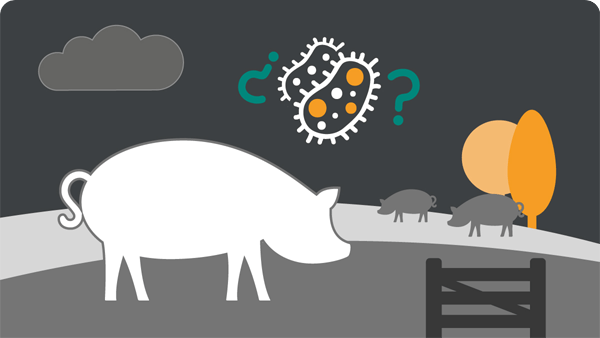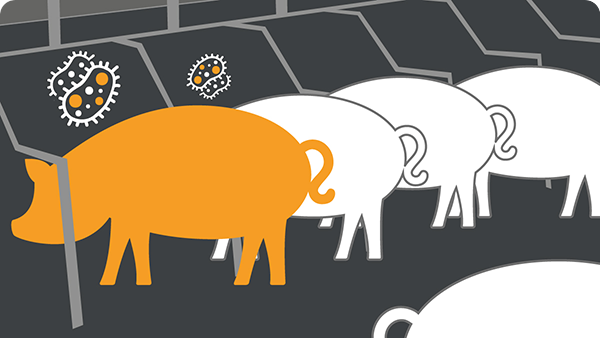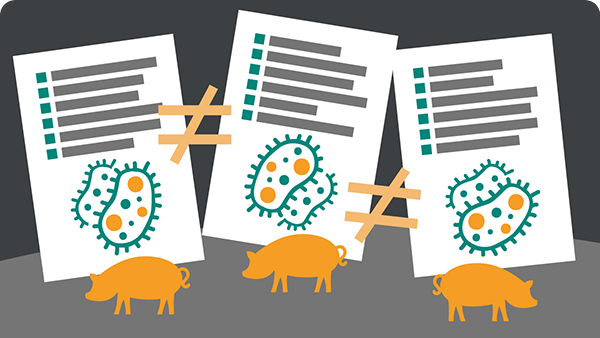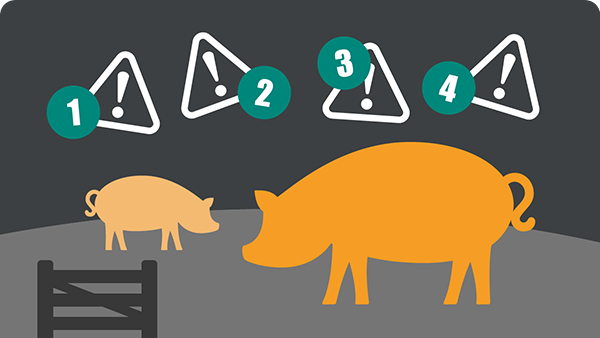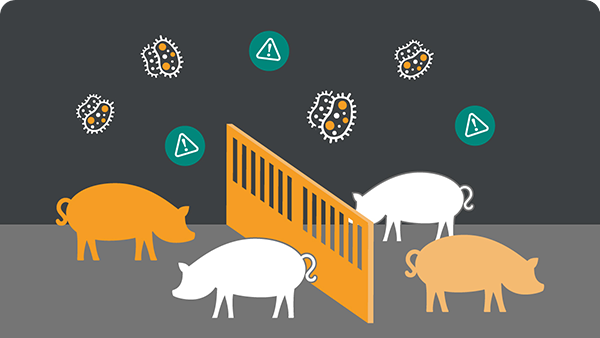
The disease
Potential impact of the reduction of antibiotics

Potential impact of the reduction of antibiotics
Nowadays, the trend for the reduction of antimicrobial usage is a fact in most of the countries with a relevant swine production. There are already specific rules for antimicrobial use in regions such as North America, more specifically in the United States, and very soon the same will happen in South America, mainly in Brazil.
This scenario started to gain importance with the ban on the usage of antimicrobial growth promoters in feed in Sweden in 1986, followed by the European Union ban on avoparcin in 1997, and on bacitracin, tylosin, spiramycin and virgiamycin in 1999. Just after the banning there was a substantial increase in the therapeutic use of antimicrobials, but over time producers and veterinarians had to learn how to work with this new requirement.

The Disease

L. intracellularis is a gram-negative rod with a sigmoid or curved shape and with a single long flagellum.

Contact us
2 Giralda Farms
Madison, NJ 07940 United States
animal-health-communications@merck.com



